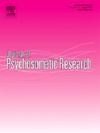Relative importance of key life domains in explaining life satisfaction among older adults
IF 3.3
2区 医学
Q2 PSYCHIATRY
引用次数: 0
Abstract
Objective
Life satisfaction is a key element contributing to successful aging. Limited empirical studies have specifically explored the nature of the relationship between domain-specific satisfaction and global life satisfaction among older adults. Furthermore, the existing literature is mainly based on cross-sectional analyses. This study aims to use longitudinal data to quantify the relative importance of key life domains in explaining global life satisfaction among older adults.
Methods
Data was drawn from the Health and Retirement Study in the US, including a total of 12,046 respondents (aged 50 years or older) followed for up to 3 waves. Global life satisfaction was measured using the Satisfaction with Life Scale. Five key life domains were studied. Hierarchical linear mixed-effects model, longitudinal dominance analyses, and mixed-effects random forests machine learning approach were used to identify the relative importance of five life domains in explaining global life satisfaction. Potential population heterogeneity is examined using sub-samples based on a number of current and early-life socio-demographic characteristics.
Results
“Daily life and leisure activities” domain was found to have the strongest explanatory power for global life satisfaction, followed by “Financial situation”, “Family life”, “Health”, whilst “Conditions of the place where you live” was relatively the least important domain. Heterogeneity was evident on sub-samples according to disability or health status, as well as exposure to early-life adverse events.
Conclusions
The findings enriched our understanding of what matters the most for older adults, and are relevant for informing more effective policy interventions to improve global life satisfaction for successful aging.
关键生活领域在解释老年人生活满意度中的相对重要性
生活满意度是成功老龄化的关键因素。有限的实证研究专门探讨了老年人特定领域满意度与全球生活满意度之间关系的本质。此外,现有文献主要基于横断面分析。本研究旨在使用纵向数据来量化关键生活领域在解释老年人全球生活满意度中的相对重要性。方法数据来自美国健康与退休研究,包括总共12,046名受访者(50岁或以上),随访最多3次。全球生活满意度是用生活满意度量表来衡量的。研究了五个关键的生命域。使用层次线性混合效应模型、纵向优势分析和混合效应随机森林机器学习方法来确定五个生活域在解释全球生活满意度中的相对重要性。潜在的人口异质性是使用基于当前和早期生活社会人口特征的子样本来检查的。结果“日常生活和休闲活动”对全球生活满意度的解释力最强,其次是“经济状况”、“家庭生活”、“健康”,而“居住地条件”对全球生活满意度的解释力相对较弱。根据残疾或健康状况以及早期生活不良事件的暴露程度,亚样本的异质性很明显。这些发现丰富了我们对老年人最重要的事情的理解,并为更有效的政策干预提供了相关信息,以提高全球成功老龄化的生活满意度。
本文章由计算机程序翻译,如有差异,请以英文原文为准。
求助全文
约1分钟内获得全文
求助全文
来源期刊
CiteScore
7.40
自引率
6.40%
发文量
314
审稿时长
6.2 weeks
期刊介绍:
The Journal of Psychosomatic Research is a multidisciplinary research journal covering all aspects of the relationships between psychology and medicine. The scope is broad and ranges from basic human biological and psychological research to evaluations of treatment and services. Papers will normally be concerned with illness or patients rather than studies of healthy populations. Studies concerning special populations, such as the elderly and children and adolescents, are welcome. In addition to peer-reviewed original papers, the journal publishes editorials, reviews, and other papers related to the journal''s aims.

 求助内容:
求助内容: 应助结果提醒方式:
应助结果提醒方式:


